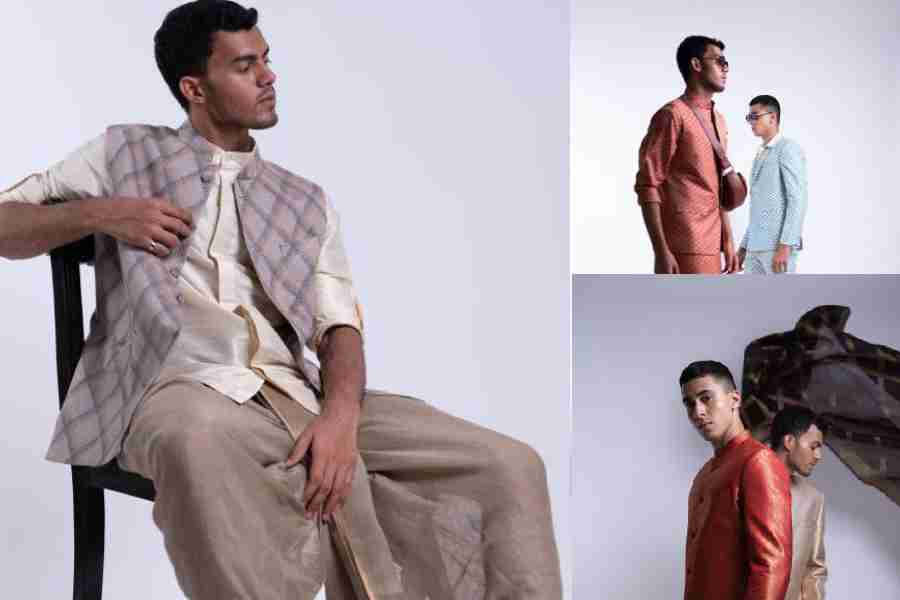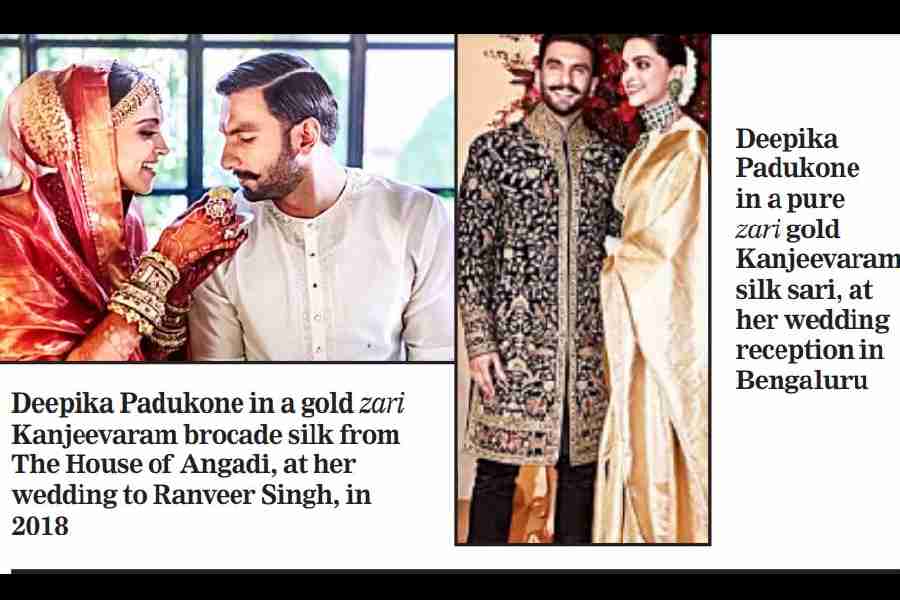The House of Angadi, known for its gorgeous handlooms and textiles, now has its new menswear label called Advaya for Men, which looks smart and cool. Achkans, shirts, suits, dhotis, jackets and more come in kantha, tussore silk, linen, silk and linen blends. The palette is a fresh one. t2 chatted with K.H. Radharaman, founder, CEO and principal designer of The House of Angadi, the brand Deepika Padukone wore for her wedding— a gold zari Kanjeevaram brocade silk with ‘Gandaberunda (two-headed bird) motif— as well as for her wedding reception in Bengaluru, once again a pure zari gold Kanjeevaram silk sari.
Congratulations for Advaya for Men. It sure looks luxe. Who is an Advaya man?
The ideal Advaya man is a bold, confident achiever. He is the square peg in the round hole, not afraid to take on transformational projects that shape his world and does not care about fitting in. His sensibilities are evolved and he is not averse to expressing his opinions nor his sensitive side. While he believes in dressing the way he thinks, he is proud of his roots and exudes power even when he is relaxed.
Casual to him is an ikat silk kurta, which shows his understanding of his textile heritage. Power to him is being secure in his ideals, and not trying to fit in, just like a beautiful hand-embroidered kantha bundi paired with ribbed silk trousers.
The brand has done menswear before. How long has the planning been there for a separate brand?
At The House of Angadi, we do indeed have a history with menswear, and we are finally excited to present this category under Advaya for Men.
Advaya in Sanskrit literally means “unique” and we had to live up to this name when it came to our men’s range. The innovation in fabric typology and design language is a result of many years of innovation. And being the first men’s collection from the brand we had to push the boundaries yet again. This is seen in the striking jacquards and silk textures as well as the silk linen ikats that make the collection a compelling blend of tradition and modernity. It is also seen in the unique geometric motifs embroidered in kantha and the super cool silk trousers that make this collection a perfect fit for today’s men.
What kind of requests were you getting that prompted you to venture into menswear in a big way?
It has always been part of our plan to foray into the menswear category. The fact that we had been designing textiles for international design houses in men’s fashion meant we had the inherent strength. In 2019 when we launched our first ever multi-category Indian luxury format, Angadi Heritage, we realised the need for a floor dedicated to menswear and accessories. This marked the entry of The House of Angadi into menswear, originally under the retail label “Angadi”. We soon launched menswear under Advaya when we saw a captive audience struggling to find clothes of international quality in high-quality fabric and fits in India.
The designs are modern yet rooted. What is the DNA of this new label?
Advaya for Men is a unique blend of aesthetics, opulent yet understated, Indian yet international, and contemporary yet rooted. This stems from my personal belief that a man is defined by his convictions and true conviction has deep roots. As always, the textile is the hero of any Advaya piece and the deep craft traditions that we as a design house have carried forward for many centuries.
The designs look versatile, but is it essentially occasion wear?
The Advaya look is a mix of occasion wear and everyday luxury. There are many sharp pieces that are most versatile. For instance, I see the ombre tie-dyed shirt being worn casually as much as for an occasion, depending on how it is worn. The same can be said for some of the other key pieces.

The House of Angadi's Advaya for Men
What was the approach like when it came to a dedicated menswear label?
I have imparted a lot of my personal sensibilities to this line, as I do with all our lines. This is a collection that I can also relate to personally, as I would be happy to wear pieces from it. In due course, I realised that most men in India are practical dressers. They favour comfort and fit over the ‘look’, which led us to be extra careful with the tailoring and craftsmanship of the garments.
Every detail, from the lining to the fusing, has been looked into and we are especially proud of the level of workmanship that we have managed to achieve in our first collection for men.
I know for a fact many of the trends that we are introducing are the first of their kind in the industry. So you will find a specially-lined silk rib trouser and a handwoven silk-linen ikat dhoti... all unique garments but with a great emphasis on wearability and practicality.
What kind of trends do you see emerging in menswear?
Menswear in India is undergoing a sea of change. We are in an era where gender fluidity in clothes is at an unprecedented level. We see a number of trends from women’s fashion influencing menswear and vice versa. We see the re-emergence of the classic paisley silk shirt as a trend along with semi-formal blazers in unique beautiful fabrics, colours and textures.
As a legacy brand, what have been the challenges to sustain it for such a long time?
The biggest challenge is to keep refreshing the brand and staying relevant. To keep breaking stereotypes of how the brand is perceived and to keep growing categories.
What does the House of Angadi intend to take up in the coming years?
We are at the beginning of several new vistas as a group. As a multidisciplinary design house, we view ourselves as being at the vanguard of making design a fundamental driver for change to address many of the greatest challenges in the current century. Textiles have been my canvas for the present, but this will evolve and change over time to other areas.
As an entrepreneur, I remain more interested in the higher mission of creating impact. I am committed to the challenge of creating sustainable and environment-friendly, beautiful products which are functionally efficient and affordable in multiple categories. We seek to occupy an important place on the craft and design map of India and create a new model of doing business, which places emphasis on creativity and innovation. This, is in my opinion, the fundamental rewiring that is required in the Indian economy and a change we hope to lead.
